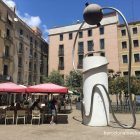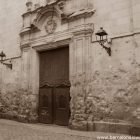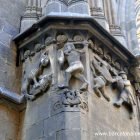Neptune is one of the best known Roman gods and there are fountains dedicated to him in numerous European cities including Rome, Florence, Madrid and Berlin.
Neptune’s fountain in Barcelona was inaugurated in 1882. Originally located in the Port Vell harbour, in 1912 the fountain was moved to the Laribal Gardens on Montjuïc where it stayed until 1975. In 1983, after eight years in storage, it was finally transfered to its current location in front of the Basilica of la Mercè.
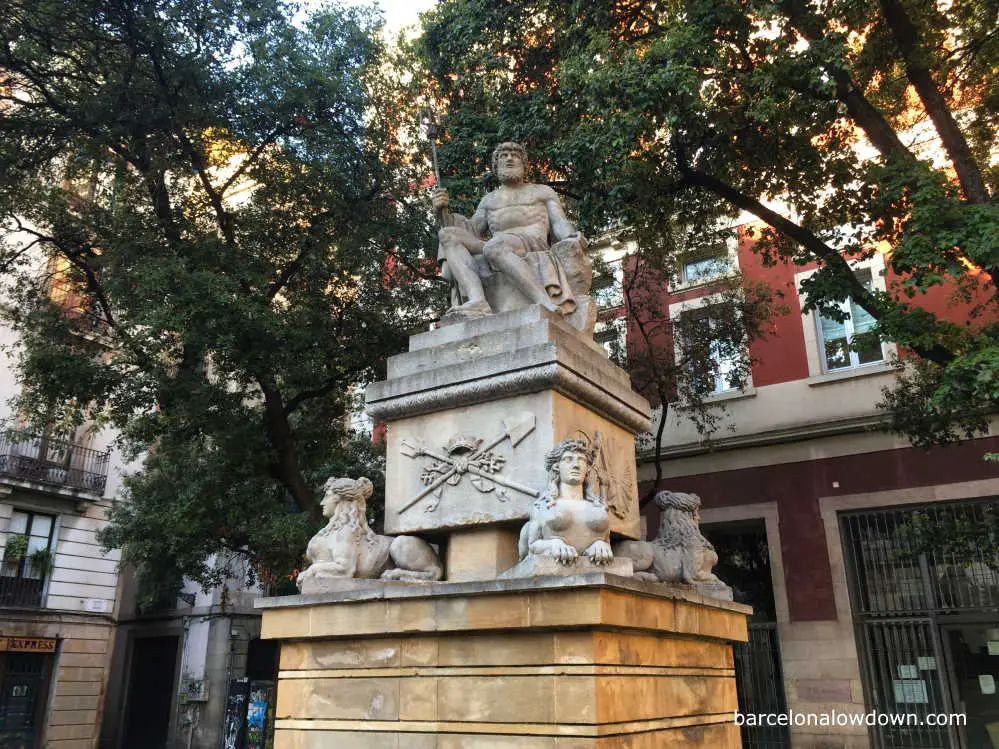
History of Neptune’s fountain
During the nineteenth century Barcelona was one of the busiest ports on the Mediterranean. Classical sculptures portraying Greek and Roman Gods were very fashionable at the time and, when the Barcelona Port Authority decided to commission a monumental fountain, they naturally thought of Neptune, the Roman god of the sea.
The fountain was a collaboration between two Catalan sculptors. Adrià Ferran who created the statue of Neptune and Celdoni Guixà who decorated the base and carved the four classical sphinxes.
Inaugurated in 1882, and dedicated to King Ferdinand VII, the fountain was originally installed on the Moll de la Riba wharf, near the Barceloneta. Apparently the monument was very popular with the mariners and fishermen who frequented the harbour. You can see a picture of the statue in its original location in this old postcard.
When the port was remodelled in 1912, there was no longer enough space available and Neptune was relocated to the Laribal Gardens on Montjuïc. When the Joan Miró Foundation was built during the 1970s, the monument was dismantled once again and spent the following eight years gathering dust in a warehouse.
Finally, in 1983, the fountain was installed in its current location, in a small rectangular pool in Plaça de La Mercé in Barcelona’s Gothic Quarter, not far from the harbour.
Apparently there were some complaints from people who were angered that a monument to a pagan god had been installed directly in front of one of the city’s most important Roman Catholic churches. The complaints didn’t come to anything and, almost forty years later, the statue remains. The Roman god Neptune staring wistfully across the square.

Symbolism of Neptune’s fountain
Son of Saturn and Ops (the Earth mother), Neptune had two brothers; Jupiter and Pluto. The 3 siblings overturned their father and divided his kingdom into three parts. Jupiter became the god of the sky, Pluto god of the underworld and Neptune god of the sea and freshwater.
Neptune is normally portrayed in human form with long white hair and a beard, carrying a trident. By all accounts, he’s not a nice character and his violent temper is said to cause storms and the destructive nature of the sea. Because of this very real danger, over the centuries mariners have developed a range of superstitions and traditions to protect them, some of which are associated with Neptune.
When boats are launched, a bottle of champagne or wine is broken over the bow as an offering to Neptune. The bearded sea god also appears in line-crossing ceremonies which are staged the first time a young sailor crosses the equator.
Ferran’s sculpture portrays Neptune seated on a large rock, his trident clasped loosely in his right hand and with a cloth draped across his lap. When the fountain was in its original location, Neptune gazed across the harbour and out to sea.
The base of the statue is decorated with symbols related to Neptune and the sea. Some of the symbols, such as the compass and the four sphinxes, are also associated with freemasonry.
Masonic symbols on the base of Neptune’s fountain
During the nineteenth and twentieth century, many well-known Barcelona residents and businessmen were Freemasons and often incorporated Masonic symbols into the designs for their homes and factories.
Some of the symbols which decorate the base of the fountain have led people to associate it with the Freemasons. Personally speaking, I’m not so convinced.
The square and compass
Freemasonry has its origins in the guilds of architects and master builders who constructed Cathedrals and royal palaces during the Middle Ages.
The group’s best known and most recognizable symbol incorporates two tools that were used by architects: the set square and the compass. In Masonic symbolism, the square represents morality and the compass wisdom. Often, the letter G is also incorporated into the design, representing God.
The symbol that adorns one side of the fountain’s base and is often mistaken for a compass and square, is in fact a sextant. A sextant is a tool that was used by mariners to calculate their location. Add to this the fact that it’s accompanied by a compass rose and the association is clear. Rather than masons, these are symbols related to seafarers and navigation rather than masons.
The sphinx
With the body of a lion, eagle’s wings, and a human head, sphinxes are mythical creatures that first appeared in Ancient Egypt and were later adopted by the Greeks. The sphinx is a guardian and commonly appears at the entrance to temples and other buildings.
Although they don’t have a special significance in freemasonry, sphinxes do commonly guard the entrances to masonic temples and often appear on official documents.
The sphinxes supporting the base of Neptune’s fountain have the face of a young woman, coiffured hair and breasts. This style of sphinx first appeared in Europe during the fifteenth century and was a popular feature of classical style architecture during the eighteenth century. Although they are clearly not related to the sea or any maritime traditions, I suspect they were chosen for their decorative value rather than symbolism.
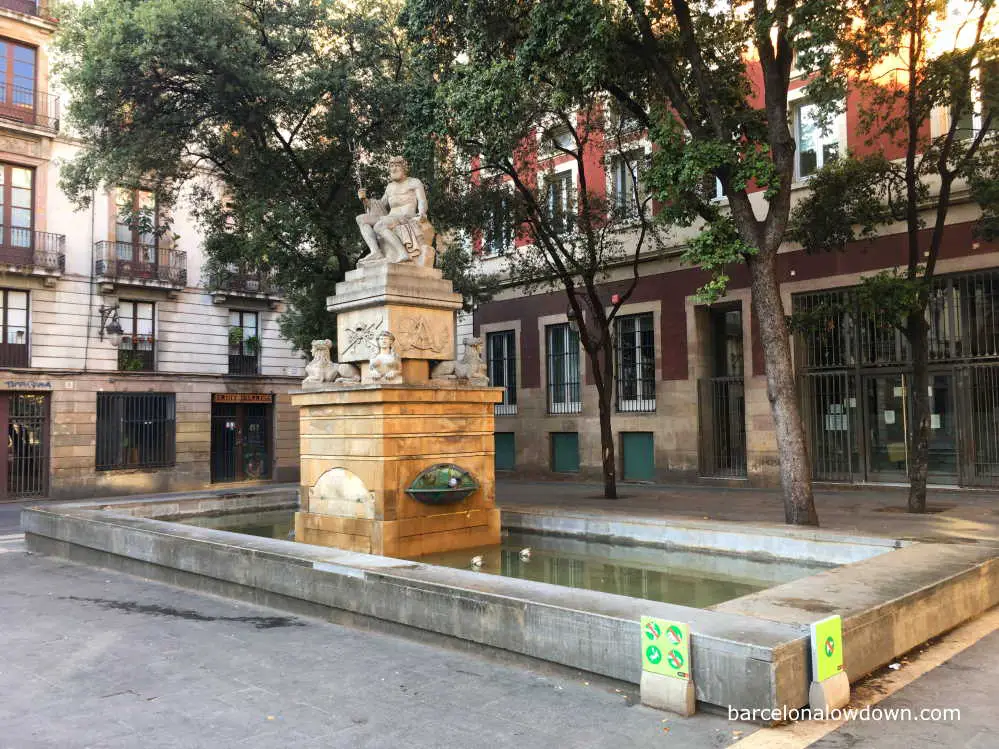
Location
Neptune’s fountain is located in the Plaça de la Mercè in Barcelona’s Gothic Quarter.
How to get there
The nearest metro station is Drassanes on the green line (L3).
Other attractions nearby
- The Basilica of La Mercè
- Hash and Marihuana and Hemp Museum
- Port Vell Harbour
- Las Ramblas
- Barcelona Wax Museum

